The 1980s garage wasn’t just a place to park the family station wagon—it was a mysterious repository of objects that seemed to multiply on their own, filling every available shelf, corner, and rafter. Part workshop, part storage unit, part time capsule, these spaces followed an unwritten rule that certain items must be present, regardless of whether anyone in the family actually used them. Step through that manual garage door (because automatic openers were still somewhat of a luxury) and enter a world where these 13 inexplicable items could be found in virtually every suburban garage across America.
1. The Coffee Can Full of Random Screws and Nails

Every ’80s garage contained at least one metal Folgers or Maxwell House coffee can filled with an archaeological record of household projects dating back decades. These mysterious containers held bent nails, mismatched screws, odd-shaped washers, and metal bits whose purpose had been forgotten sometime during the Carter administration. The coffee can collection grew through a sacred ritual: whenever something was disassembled, any leftover or stripped hardware would be ceremoniously deposited into the can, just in case it might be needed someday. For additional ideas, Cafe Bustelo lists other ways to use this caffeinated storage to your advantage even after it’s spilled the beans.
No one could ever find the specific fastener they needed in these containers, yet searching through them was always the first step in any home repair project. The coffee can’s contents defied all organization attempts, immediately returning to chaos even when someone periodically dumped them out on the workbench and sorted them by size or type. These collections were often inherited along with the house, meaning some of the mysterious metal bits had likely been passing from homeowner to homeowner since the property was built.
2. Wood Paneling Remnants from the Basement Remodel

Somewhere in every ’80s garage, usually leaning against the back wall behind the lawnmower, stood several sheets of faux wood paneling left over from when the basement was remodeled into a rec room. These dark brown panels with their unmistakable woodgrain pattern had been purchased in excess “just in case” during the basement transformation project years earlier. The extra panels remained untouched, gathering dust and cobwebs while being moved from one garage location to another during occasional cleaning frenzies. Stonelink Marble & Granite suggests there is something to be said about using remnants of key construction material, if a homeowner wants to save money.
Despite never being used for their intended purpose, these paneling remnants were considered too valuable to throw away, with homeowners convinced they would eventually need them for repairs or to panel another room. The persistence of these panels in garages nationwide reflected the ’80s homeowner’s tendency to save building materials indefinitely, creating suburban time capsules of decorating trends long after those trends had fallen out of fashion. By the late ’80s, many families had moved on to drywall and wallpaper, yet the wood paneling remnants remained, monuments to the basement hideaways where dads had installed their massive console TVs and vinyl recliners.
3. Partially Empty Paint Cans with Dried Lids

Every horizontal surface in an ’80s garage seemed to accumulate partially used paint cans, their lids sealed shut with dried paint despite everyone knowing you were supposed to clear the rim before closing them. Each can bore cryptic identifications on masking tape labels with faded writing: “Kitchen 1986,” “Jimmy’s Room,” or simply “Trim???” with multiple question marks suggesting uncertainty even at the time of labeling. The collection spanned multiple painting projects from throughout the decade, including colors like mauve, forest green, and that peculiar peachy-beige that dominated so many ’80s living rooms. For those looking to empty these out, Lowe’s gives a thorough rundown for properly and safely disposing of paint at just about any stage.
The family maintained an unspoken agreement never to dispose of these cans, convinced that someday they would need to exactly match the paint for touch-ups, despite the fact that sunlight had long since altered the original color on the walls. These paint graveyards expanded with each home improvement project, with new half-empty cans joining their predecessors on garage shelves built specifically to house this growing collection. The older cans often developed a fascinating landscape of dried paint stalactites hanging from their lids, adding an unintentional artistic element to their utilitarian purpose.
4. A Collection of Mismatched Plant Pots

Tucked into corners and stacked in precarious towers were plastic, ceramic, and terracotta pots in various states of deterioration, awaiting spring planting that never seemed to use all of them. These pots represented years of ambitious gardening plans, Mother’s Day gifts, and plant purchases whose green occupants had long since withered away under neglectful care. The collection invariably included several of those ubiquitous brown plastic pots from garden centers, a few painted ceramic planters with chipped edges, and at least one macramé hanger without its actual plant.
Each spring, the family would buy new pots for their annual flowers while promising to “finally use up some of those pots in the garage,” a promise that was promptly forgotten upon returning home. The garage plant pot collection operated on a one-way principle: pots entered but never left, creating an ever-growing plastic and ceramic monument to good gardening intentions. By the late ’80s, many families had accumulated enough pots to open a small garden center, yet continued to add to their collection each season, unable to break the cycle of plant pot accumulation.
5. A Lawn Dart Set Missing at Least One Dart

Hidden on a high shelf or buried in a box of outdoor games was an incomplete set of lawn darts, those lethal-pointed projectiles that somehow were considered appropriate backyard entertainment before being banned. The set invariably contained the plastic ring targets and three of the original four metal-tipped darts, with the missing fourth piece having disappeared during a family picnic years earlier, possibly embedded in the earth of a neighbor’s yard. The remaining darts were stored out of children’s reach not necessarily due to safety concerns, but because they were considered too valuable to lose after the games were pulled from store shelves.
Parents occasionally reminisced about epic lawn dart battles while acknowledging they probably shouldn’t let the kids play with what were essentially handheld missiles with plastic fins. The incomplete set remained in garage limbo—too dangerous to use, too nostalgic to discard—taking up permanent residence amongst other abandoned outdoor games like badminton sets with torn nets and croquet mallets with missing balls. The lawn dart set’s continued presence in the garage represented the physical embodiment of the phrase “they don’t make toys like they used to,” a statement uttered with equal parts nostalgia and acknowledgment that maybe that was for the best.
6. A Stack of National Geographic Magazines

Every ’80s garage contained at least one precariously leaning tower of yellow-spined National Geographic magazines, saved for their educational value despite no one ever referencing them again after initial reading. These collections often began with good intentions—parents subscribing to expose their children to the wider world or planning to use them for school projects—before the monthly arrival of new issues quickly outpaced anyone’s ability to read or store them properly. The characteristic yellow spines created distinctive strata in garage archaeology, with occasional issues missing because they featured particularly compelling photographed natives from remote regions that teenage boys had squirreled away elsewhere.
The magazines were considered too important to throw away, with parents insisting they would be valuable someday, despite increasing evidence to the contrary as garage sales across America offered similar collections for pennies an issue. The garage became a sort of amateur library annex, with magazines spanning years or even decades arranged in rough chronological order, their pages growing increasingly yellow and brittle in the fluctuating temperatures. School projects continued to require students to “cut out pictures from magazines,” yet somehow this never significantly reduced the National Geographic population in the garage, which seemed to multiply through some mysterious process.
7. Sports Equipment for Sports No One in the Family Played
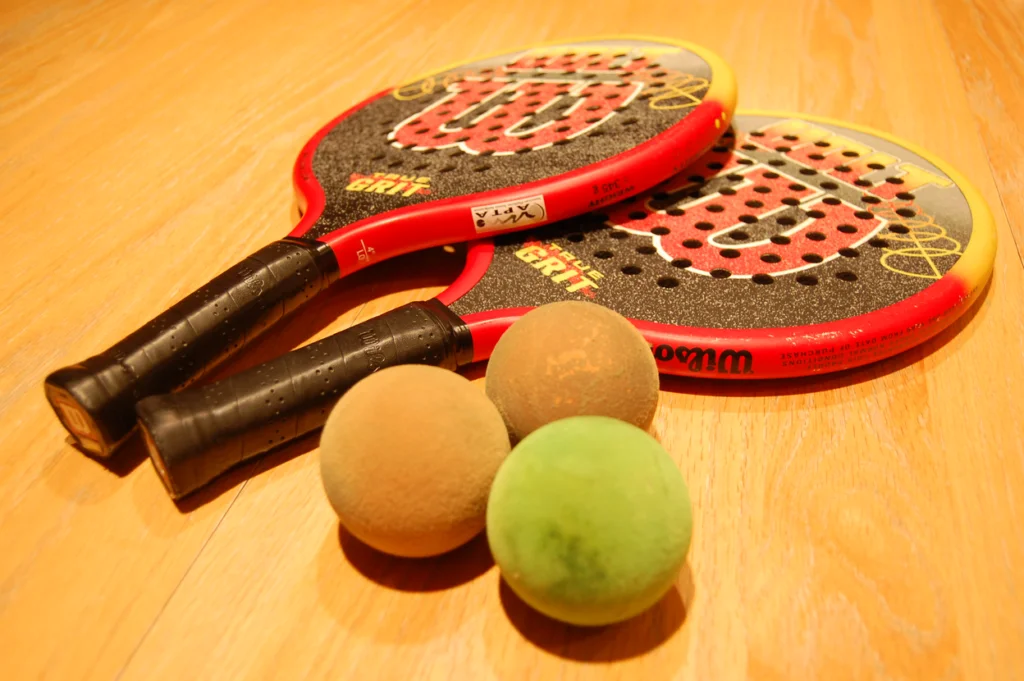
Wedged between the water heater and the recycling bins sat sporting goods for activities no current family member actively participated in: a tennis racket with wooden frame and loose strings, downhill skis from the brief period when dad thought he might become a winter sports enthusiast, or a bowling ball in a scuffed bag with someone else’s name still printed on it. These artifacts remained in the garage long after interest in the sport had waned, becoming permanent residents through a combination of optimism (“I might take it up again”) and perceived value (“Those skis were expensive!”).
Each piece had its own abandonment story—the badminton set used during two summer cookouts before being relegated to its corner, the archery target purchased during the Olympics but never actually removed from its packaging, or the croquet set played with exactly once before the family discovered their yard wasn’t actually level enough for proper play. The equipment aged quietly in the garage’s recesses, occasionally being moved during cleaning frenzies but never actually leaving the premises, becoming part of the home’s permanent inventory despite its complete lack of utility. These sporting goods graveyards were particularly pronounced in families with children who had cycled through multiple activities before finding their athletic passion, leaving a trail of abandoned equipment in their wake.
8. The Mystery Key Collection

Hanging on a nail near the door or tossed in a jar on the workbench was an assortment of keys that no longer corresponded to any known lock in the household. These orphaned keys accumulated through moves, lock replacements, and purchased items that came with keys that were promptly separated from whatever they were supposed to open. Each family member maintained the collective fiction that someone else knew what these keys were for, resulting in a growing collection that nobody dared discard lest they suddenly need to open something important.
Some keys bore helpful labels that had become cryptic with time: “Back door – OLD” (from which house?), “Julie’s padlock” (who was Julie?), or simply “IMPORTANT!” with no further context. The collection served as a mechanical timeline of the family’s history—old car keys from vehicles long since sold, tiny luggage keys for suitcases that had disintegrated in the attic, or skeleton keys from a grandparent’s house that had been sold decades earlier. Like archaeological artifacts, these keys connected the family to their past even as their practical purpose had been lost to time, ensuring their continued preservation in the garage’s key purgatory.
9. Half-Empty Bottles of Car Fluids and Additives
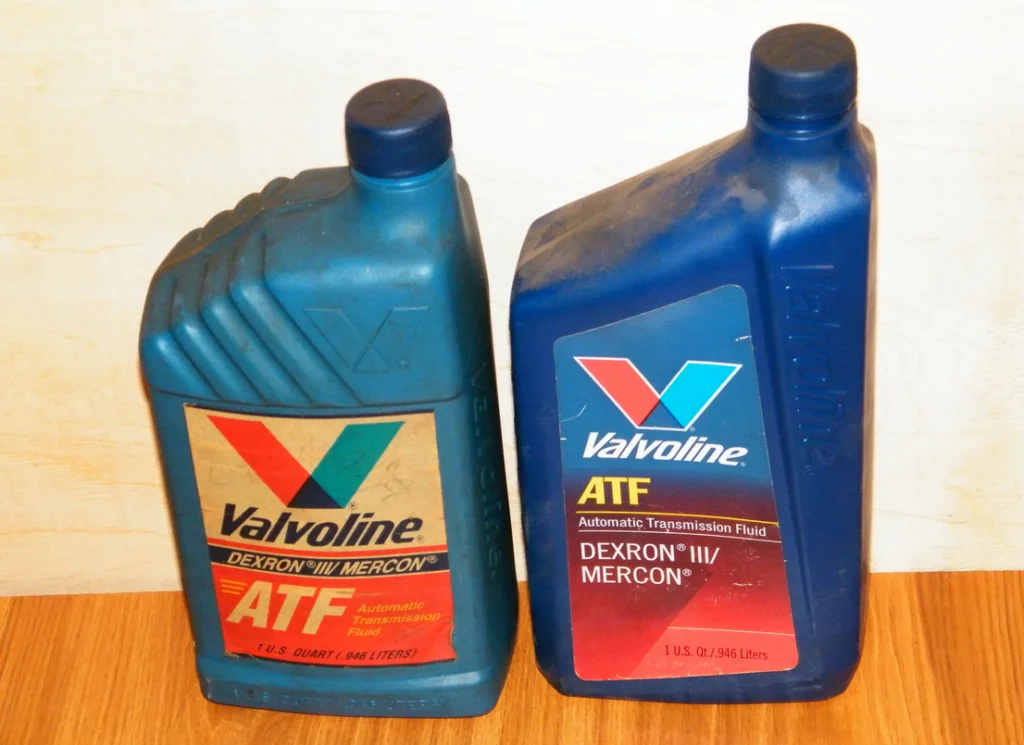
The ’80s garage invariably contained a hazardous materials collection of partially used automotive chemicals: ancient bottles of STP oil treatment, brake fluid containers with crusty caps, and antifreeze jugs sporting faded labels and suspicious crystallization around their openings. These automotive elixirs were purchased for specific vehicle issues or routine maintenance, used once, and then granted permanent residency on the garage shelf, where they would remain long after the car they were purchased for had been traded in or junked. The collection grew with each vehicle the family owned, creating a toxic time capsule of automotive care products spanning multiple decades and technological eras.
Family members developed an unspoken agreement never to dispose of these chemicals, convinced that someday they would face an automotive emergency requiring exactly three inches of decades-old transmission fluid. The containers typically featured deteriorating labels, making their contents increasingly mysterious as time passed, with dad insisting he knew exactly what each bottle contained despite evidence to the contrary. This chemical collection represented both the do-it-yourself ethos of ’80s car ownership and the peculiar human tendency to assign irrational value to partial containers of toxic liquids simply because they had been purchased for a substantial sum at some point in the past.
10. A Broken Appliance Being “Saved for Parts”
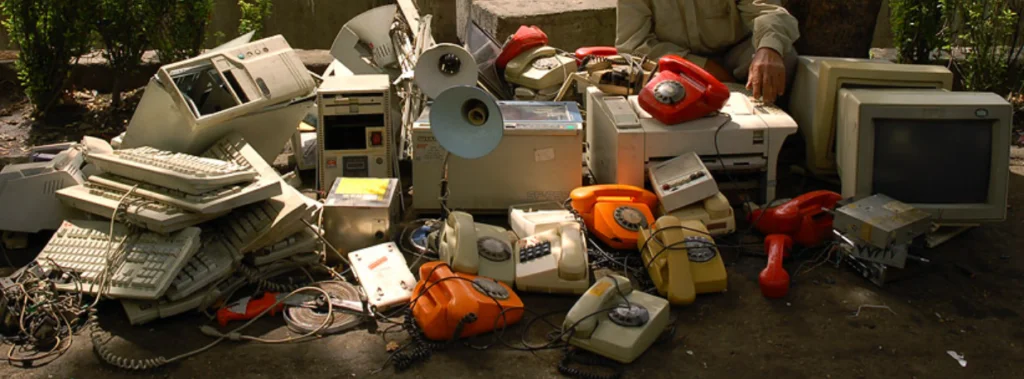
Taking up valuable floor space in every ’80s garage was at least one defunct major appliance—a washing machine with an irreparable spin cycle, a refrigerator that had given up its cooling abilities, or a lawnmower that hadn’t started since the Reagan administration. These mechanical corpses were kept under the perpetual explanation that they were being “saved for parts,” despite no one in the family having the expertise or inclination to cannibalize them for components. The appliance graveyard often included items that had been replaced twice since their original breakdown, creating an evolutionary timeline of household technology within the garage.
These dormant machines developed second careers as makeshift shelving units, becoming permanent storage locations for paint cans, gardening supplies, or automotive fluids. Their extended garage residency was justified through occasional references to their potential utility (“That old fridge would make a great workshop refrigerator if I ever get around to fixing it”) or their supposed inherent value (“They don’t make them like that anymore”). The broken appliance served as a mechanical memento mori—a reminder of consumer mortality and planned obsolescence—while simultaneously occupying space that could have stored something actually useful.
11. An Incomplete Set of Encyclopedias

Stacked in a forgotten corner or boxed on a high shelf was a partial set of encyclopedias, typically missing volumes containing crucial letters like “M” or “S” that had been borrowed for school projects and never returned. These massive tomes had been purchased from a door-to-door salesman in the early ’80s at tremendous expense, with parents making monthly payments while assuring themselves this investment would guarantee their children’s academic success. The encyclopedias’ garage exile typically began when the family acquired a newer reference source or when the volumes’ obvious outdatedness (especially regarding countries and world maps) diminished their perceived value.
Despite their relocation to the garage, these encyclopedias retained too much financial and emotional investment to be discarded entirely, so they gathered dust and provided homes for spiders while waiting for a purpose that would never come. The books’ gilt edges grew tarnished in the garage’s humidity, their once-prestigious leather or leatherette bindings cracking and fading as the decades passed. By the late ’80s, many families had begun transitioning to digital references like Encarta on CD-ROM, yet the physical encyclopedias remained, too expensive in memory to discard despite their growing obsolescence.
12. A Box of “Valuable” Collectibles
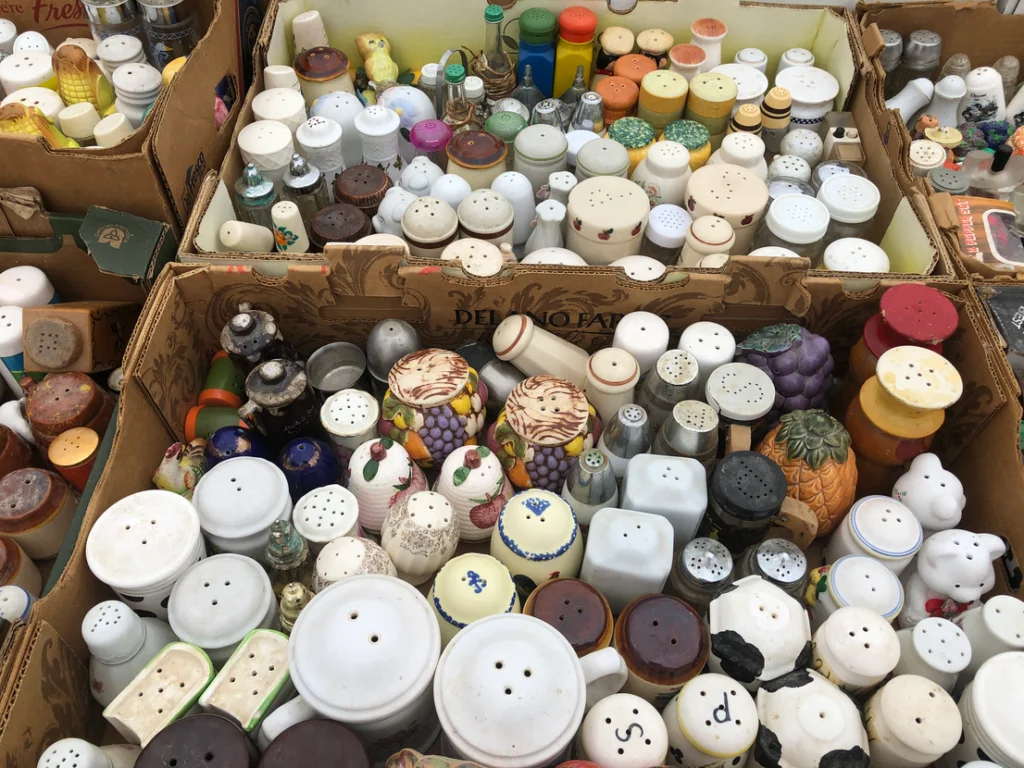
Every ’80s garage sheltered at least one cardboard box labeled “COLLECTIBLES” or “VALUABLE—DO NOT THROW AWAY” containing items purchased specifically as investments that had yet to appreciate: Franklin Mint commemorative plates, Cabbage Patch Kids still in boxes, or complete sets of Return of the Jedi drinking glasses from Burger King. These collections represented the ’80s speculation bubble in mass-produced “limited editions,” purchased with the confident assumption that their value would increase exponentially if kept in mint condition. The collectibles box often included newspaper clippings about similar items selling for large sums, carefully saved as evidence of the wisdom of these investments.
The items remained sealed in their original packaging, the family periodically checking price guides only to find their value had remained static or actually decreased over time. Despite mounting evidence that these mass-produced treasures would never fund anyone’s college education, they remained enshrined in the garage, too financially and emotionally invested in to discard yet not actually valuable enough to warrant proper storage conditions. The collectibles box served as a tangible reminder of ’80s consumer optimism, when ordinary people believed that purchasing the right Happy Meal toy or commemorative coin might someday make them rich—all they had to do was store it in the garage for a few decades.
13. A Single Random Ski or Ice Skate
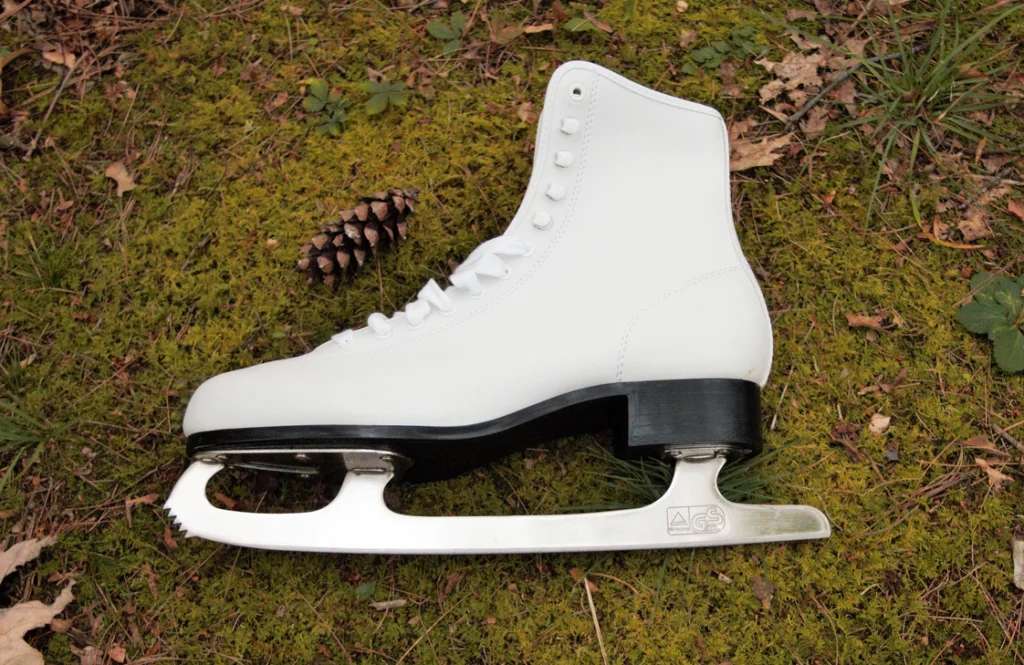
Perhaps the most mysterious universal garage item was the single ski or ice skate, separated from its mate through circumstances no one in the family could recall. This lone sporting good leaned in a corner or rested on a high shelf, maintaining its solitary existence despite periodic garage cleaning attempts that eliminated far more useful items. The single ski—typically an entry-level K2 or Rossignol from the early ’80s with those distinctive neon geometric patterns—stood as a monument to winter sports enthusiasm that had waned after one or two actual experiences with cold, wet snow and expensive lift tickets.
The family maintained an unspoken agreement to preserve this orphaned item, operating under the collective delusion that its mate might someday mysteriously reappear from whatever dimensional portal had claimed it. Children occasionally repurposed these singleton items for backyard games involving rules only they understood, while parents periodically picked them up during cleaning frenzies, sighed, and returned them to their established position in the garage ecosystem. The single ski or skate represented the ultimate garage paradox: too useless to serve any purpose yet too expensive in memory to discard, ensuring its position in the family’s possession until the eventual estate sale after the children had grown and moved away.
The ’80s garage wasn’t just a storage space—it was a museum of consumer optimism, abandoned hobbies, and the peculiarly American tendency to assign sentimental value to objects long after their practical purpose had expired. While today’s garages might contain more electronic waste and fewer National Geographics, the essential character remains: that unique space where perfectly good items go to neither be used nor discarded, existing in a liminal state between utility and garbage. The ’80s garage, with its coffee cans of random hardware and partially used paint, taught us an important lesson about our relationship with our possessions—sometimes the hardest things to get rid of are the things we never really needed in the first place.


